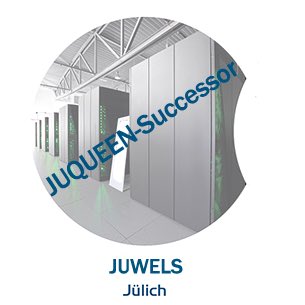 As part of a groundbreaking supercomputer to meet the growing needs of business and science, researchers have developed a new high-performance module capable of up to 12 quadrillion calculations per second.
As part of a groundbreaking supercomputer to meet the growing needs of business and science, researchers have developed a new high-performance module capable of up to 12 quadrillion calculations per second.
The supercomputer JUQUEEN, the one-time reigning power in Europe’s high-performance computing industry, is ceding its place to its successor, the Jülich Wizard for European Leadership Science. Called JUWELS for short, the supercomputer is the culmination of the joint efforts of more than 16 European partners in the EU-funded DEEP projects since 2011. Once completed, JUWELS will consist of three fully integrated modules able to carry out demanding simulations and scientific tasks.
The first JUWELS module is being installed at the Jülich Supercomputing Centre (JSC) in the spring of 2018. The general-purpose Cluster Module is based on a French IT services company’s Sequana architecture, with software supplied by one of the German partners. It consists of about 2550 compute nodes, each with dual Intel Xeon 24-core processors and at least 96 GB of main memory. Armed with such massive firepower, it can reach a peak performance of 12 petaflops/s, or 12 quadrillion operations per second.
Building on the architecture developed in the predecessor DEEP and DEEP-ER projects, DEEP-EST aims to deliver another two modules based on the Modular Supercomputer Architecture concept. The innovative concept was first dreamed up years ago by Prof. Thomas Lippert, Director of the JSC. “The JSC is breaking new ground with its modular concept,” he said in a Jülich press release.
A modular approach to supercomputing
In today’s world of high-performance computing, compute-intensive applications involving simulation and data analysis have become increasingly important, but current supercomputers just cannot keep up. “[A]pplications are becoming significantly more complex and the volumes of data from present-day experiments, for example at CERN, are increasing in size. This means that supercomputers will require drastically larger storage capacities – and they must be located as close to the processors as possible. Only then can the data be processed in a fast and energy-efficient manner,” explained JSC scientist Dr Estela Suarez in an earlier press release.
Enter Modular Supercomputer Architecture, which combines diverse modules with different performance features into a single system. The modules are connected through a high-speed network and are operated by the same software. Heterogeneous applications therefore run concurrently on exactly matching compute and data resources, offering significant reductions in the time and energy needed to calculate a solution. The system’s high flexibility also makes it easily adaptable. Designed with big data science needs in mind, modular supercomputing is a novel European approach to information processing technology. It will pave the way for cost-effective and energy-efficient exascale computers – supercomputers a thousand times faster than today’s most powerful systems.
Six real-world applications are being used to evaluate the hardware and software technologies developed in DEEP-EST. These are high-energy physics, earth science, space weather, molecular dynamics, neuroscience and radio astronomy. Each field uses different module combinations, proving Modular Supercomputer Architecture’s adaptability to the needs of many different users.
Next in line in DEEP-EST (DEEP – Extreme Scale Technologies) is the Extreme Scale Booster module, which will be able to support a wide range of high-performance computing applications. This will be followed by the project’s final output, the Data Analytics Module, whose design will be geared towards high-performance data analytics workloads.




